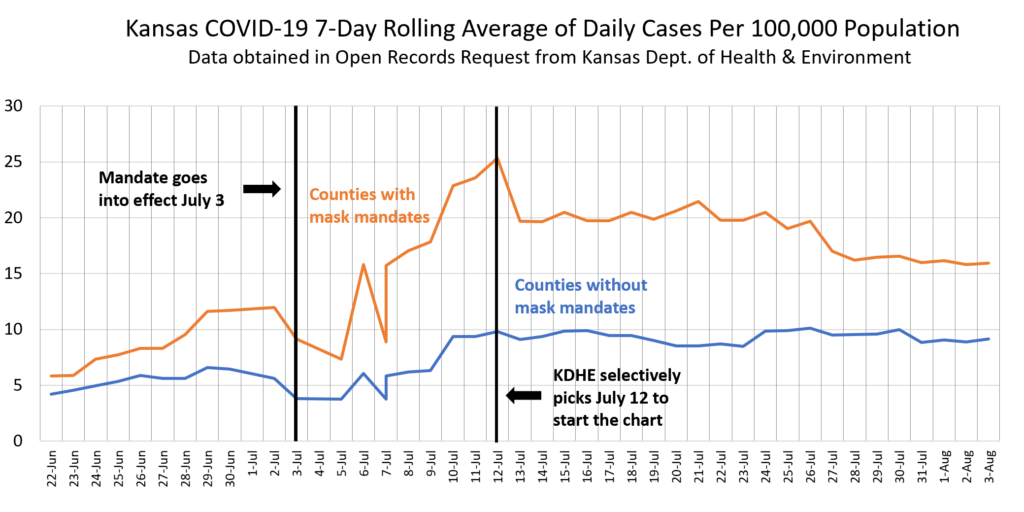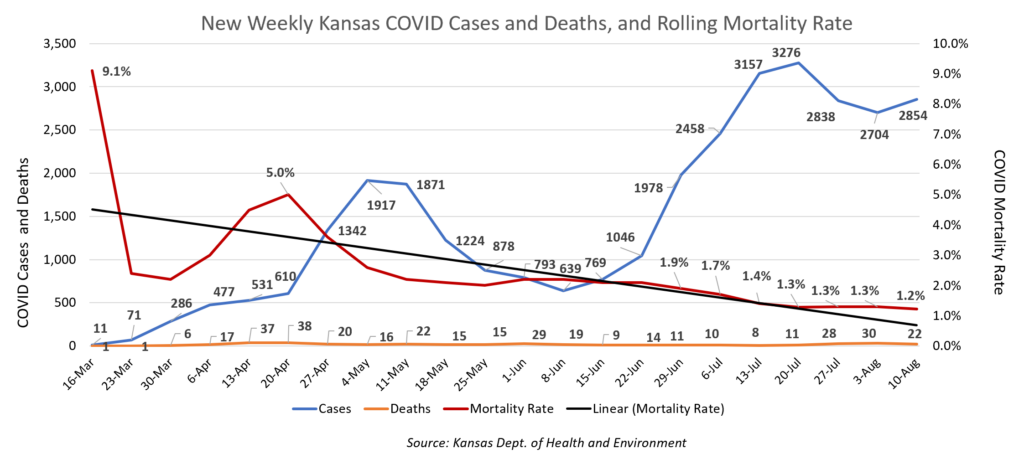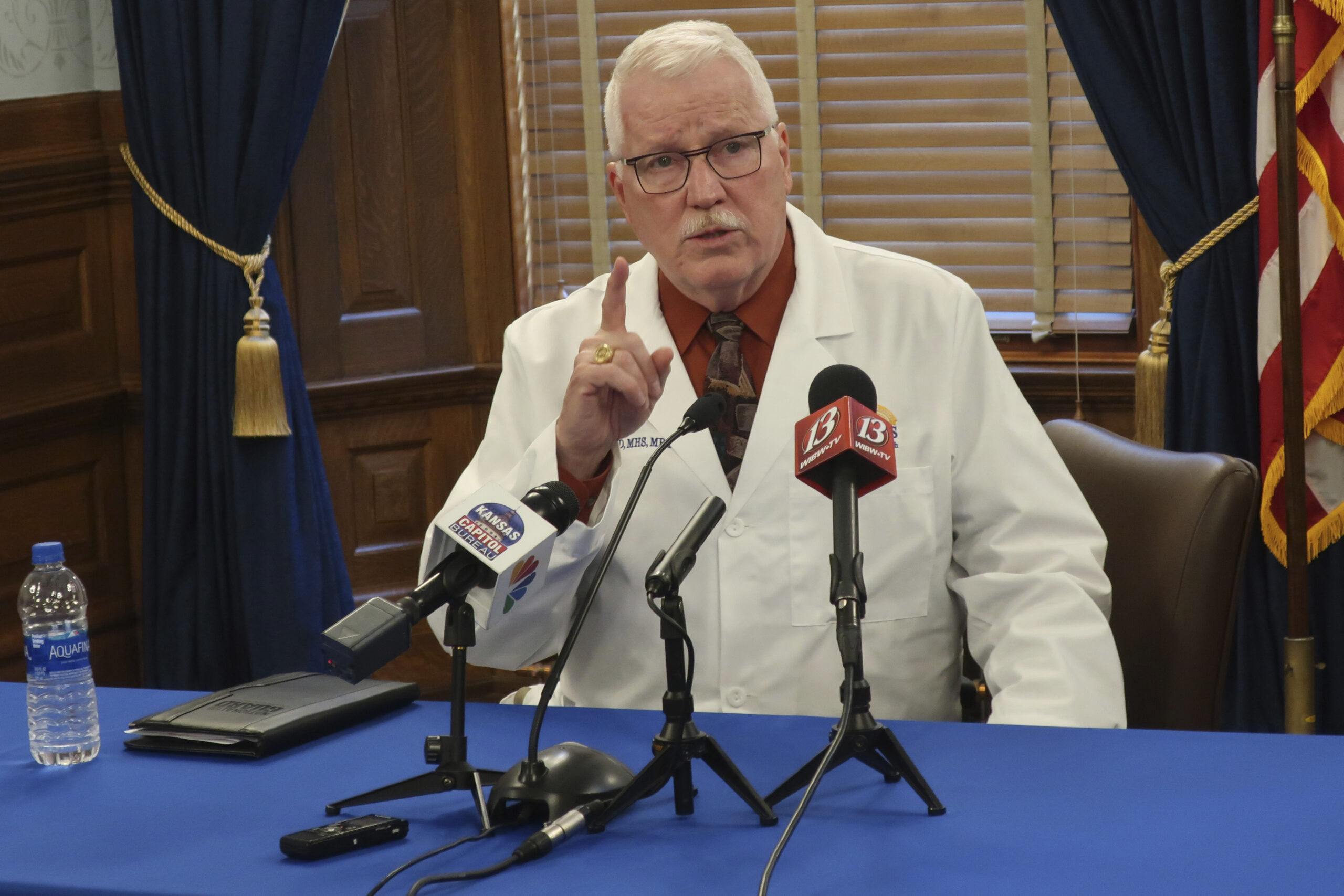The McClatchy-owned Kansas City Star and Wichita Eagle on Sunday published a lengthy endorsement of the Kelly administration’s use of a manipulated graph which was intended to showcase the effectiveness in counties that adopted the mandate.
Earlier this month, the Sentinel caught Kelly’s Department of Health and Environment Secretary Dr. Lee Norman showing a chart that was altered to make it appear that counties that endorsed Governor Kelly’s mask mandate had fewer new daily COVID cases per 100,000 population than the counties that rejected her mandate. After an Open Records filing forced them to turn over the data used to create the chart, we showed how Norman hid nine days’ of data between the July 3 implementation of Kelly’s mandate and the July 12 start of his chart, during which time the mandate counties had a larger increase in new cases before beginning to taper off.
The following inventory of acts of journalistic malpractice documents how the Kansas City Star and the Wichita Eagle covered up the Kelly administration’s efforts to deceive Kansans on the efficacy of a mandate.
False claim #1 – Even Dr. Norman’s distorted chart showed daily cases declined in counties that rejected the mandate, and the data they turned over confirms daily cases declined from 9.8 on July 12 to 9.1 on August 3. But the McClatchy homage mask-querading as a news story said cases in those counties “trended up.” The Star and Eagle reporters were careful to not mention any dates in that paragraph, possibly setting up a defense that they meant cases trended up from the July implementation of the mandate, but that would expose Cover-up #1.

Cover-up #1 – the McClatchy reporters said Norman’s data “shows an overall downward trend,” which is only true if speaking of the chart that deceptively began on July 12. But if that’s their claim, it contradicts False Claim #1.
Cover-up #2 – the ‘news’ article didn’t include a chart like the one above created by the Sentinel from Norman’s data, showing the comparative trends of counties with and without mandates. The reporters only provided vague and incomplete descriptions of Norman’s data because a picture of the data reveals Cover-up #3.
Cover-up #3 – McClatchy readers wouldn’t know it from the article, but the charted data shows counties with a mask mandate always had more daily cases than the counties that rejected the mandate.
False claim #2 – the reporters acknowledged that Norman’s data was eventually posted online (but didn’t mention that was done after the Sentinel forced the data to be produced through Open Records filing) but they inexplicably analyzed data collected by the New York Times instead of the data Norman used to create his deceptive chart. They said “the rolling average peaked in mask counties on July 17” but the real data shows a peak on July 12, which exposes another cover-up.
Cover-up #4 – Norman cherry-picked the July 12 peak to begin his chart so he could show a decline in cases without disclosing that the number of cases on the chart’s last day, August 3, was higher than when the mandate was implemented on July 3.
Faux science #1 – the reporters employed a classic logical fallacy to declare mandates (not masks, mind you, but mask mandates) effective. The headline says, “Kansas began requiring masks, then virus cases dropped.” Set aside for a moment the fact that their statement is factually inaccurate (see the chart and Cover-up #1) and examine the logic. They imply mandates are proven effective because one thing happened (a mandate was imposed) and then another thing allegedly happened (cases declined), so one thing caused the other. That flawed logic is called a post hoc fallacy, from the Latin phrase Post hoc ergo propter hoc (“after this, therefore because of this”). School districts and Kansas Supreme Court justices employ the same logical fallacy in declaring that spending more money causes student achievement to increase (‘some states spend more and have higher achievement, therefore money causes achievement to rise’).
Cover-up #5 – the story says “Kansas also witnessed it first extended reduction in daily new cases since June following the implementation of Kelly’s order on July 3.” But McClatchy’s political homage neglects to mention that Kansas had an extended reduction in daily new cases between May 4 and June 6 when no mask mandates existed.

Cover-up #6 – they acknowledge that Norman was accused of publishing “misinformation” by “Republicans” but the reporters didn’t interview anyone who was critical of the Kelly administration; they only published comments from supporters.
Cover-up #7 – it wasn’t just “Republicans” who criticized Norman’s deception; there is a long list of critics including the Washington Examiner, an international group of scientists writing for Principia Scientific, Daniel Horowitz writing for TheBlaze.com, Wichita radio station KNSS, and Fox News reporter Brit Hume tweeted about Norman using sleight of hand to support the mandate.
These and other incidents of journalistic malpractice partly explain why so many people distrust media, according to House Majority Leader Dan Hawkins (R-Wichita).
“In the 1970s the media helped lead the way in exposing the Watergate coverup. Now it’s 2020 and the media is performing the coverup for the Kelly administration. The story from McClatchy builds a straw-man argument while completely ignoring the fact that the Kelly administration misled the public and cherrypicked the reporting dates. Using some accurate data is not a free pass to mislead the people of Kansas.”



